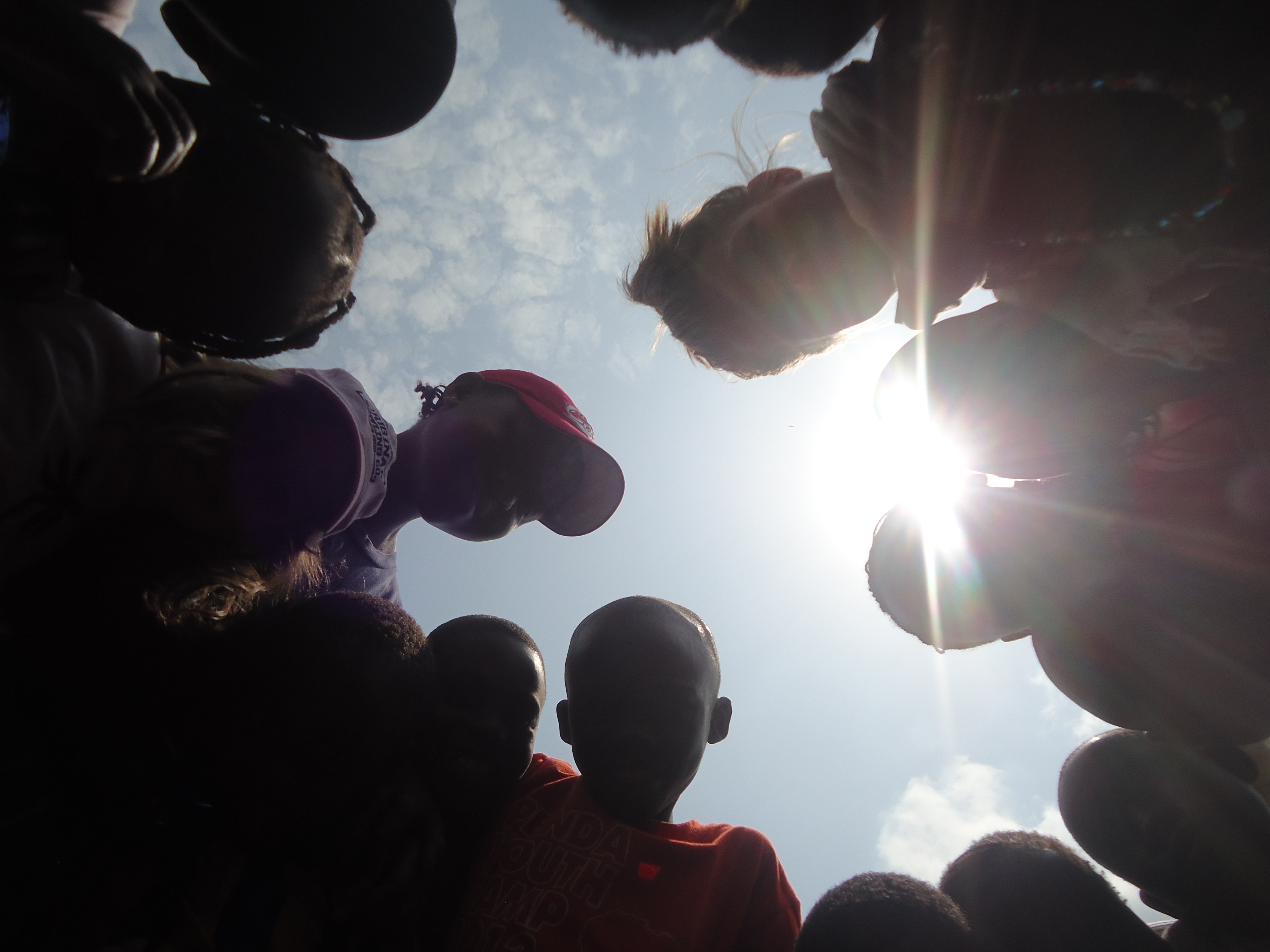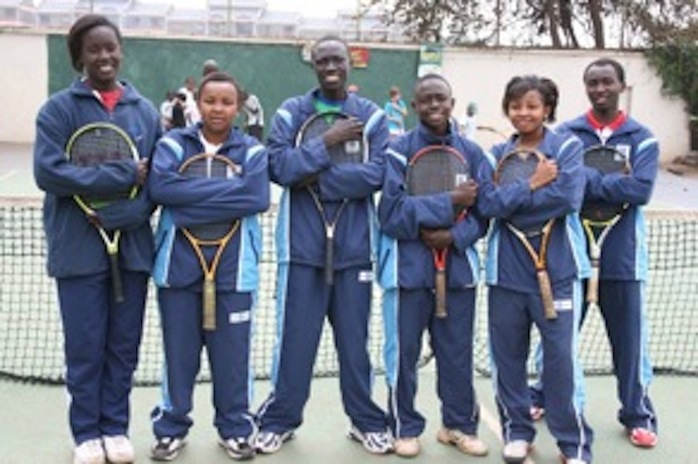Does Building African Tennis Stars For The World Stage Make Sense?
Africa hopes to arrive on the world stage with growing numbers of tennis players around the continent. These are exciting moments, only just a few years ago, a Kenya-trained player from a small but unique sports centre (Sadili Oval, next to Kibera), Burundi-born Hassan Ndayashimiye, made it to the world stage, coming through the qualifiers and reaching the second round at Wimbledon Juniors. Hassan has since joined college in the USA, after a successful stint at the ITF Centre in Pretoria. Sadili Oval also completed 2011 with Henry Ayesiga (a beneficiary from the slums of Kampala Uganda) earning second place in Africa in the Boys Under 14, nurturing him to through the next two years, finally saying a fond goodbye when he became a student at Cerritos College, USA. They are not the first product of our academy, we accept poor children from around Africa, and provide them with education and tennis training, with 7 playing college tennis on scholarship in the USA, 14 are top in the region and 9 have scholarships awarded to them in UK high schools. Amongst them are:
- Kenya Open 2010 Triple Champion (won ladies singles, ladies doubles and mixed doubles), Aziza Butoyi, who is the first from Buyenzi slums in Burundi, to enter university, having gained a tennis scholarship to Olivet Nazarene University, where she almost single-handedly carried her team to NAIA Nationals in 2011, and later became All American
- Maurice Wamukowa (Kenya) who graduated from Florida A &M where he went on a tennis scholarship, Maurice has played for both Kenya and the ITF Africa team in his junior years.
- Joab Odera (Kenya), Captained Malezi School (the academy school) to win the national tennis title throughout his high school, earning a tennis scholarship to Winston Salem State University where he graduated cum laude in Molecular Biology. He is now on a PhD Program in North Carolina Central University.
- Rahab Mbugua (Kenya), was the region’s top girl for about 4 years.
- Teresa Odera (Kenya), who is an honors student and player at Northwestern College Iowa, where she has won accolades. She was the first Kenyan to win a silver medal at an Under 14s ITF event (she was 10 years) and went to help her school win the national schools title for 6 years. She is now taking a second degree in software development.
- Yasin Shabani (Tanzania), an orphan, who ended 2011 as the top Under 18 player, but also the second highest ranking senior player in his country. He is now a coach.
- Amadi Kagoma – has consistently won singles and doubles at the national school games, and is currently ranked in the late 700s worldwide. With more support, Amadi, who is currently at Cerritos College in California, and later graduated to University of California in Bakersfield.
- Jamin Luvembe – who was the first boy form Kibera to play the Davis Cup for Kenya in 2013. He is a tennis coach and a DJ in the Kenyan Coast of Mombasa.
As you can see, from the examples described, although they had great talent, and used it to open doors to future outside professional sport.
The Effort Is Great – Is The Reward Requisite?
On average, most junior will have sacrificed about 7 years of their lives, to get to be amongst the best in their country. In order to get noticed, they would, on average, joined the game at about 9 years, and reached their peak at 17 years. This is often because the game is learned at a relatively older age than would be seen elsewhere. You would not find a more committed, athletic and hardworking junior than what you see in Africa, yet only a very narrow band make the cut to play any grand slams, and often only at the qualification stage. I have often talked to many coaches on the top level circuits, and many do not really have clear answers, perhaps because very few have had contact with these incredible kids. What I often find, is that there is no difference between a top Under 14 junior in Africa and that in Europe or America, indeed, I have travelled with teams of kids between 12 and 15 years to tournaments in Florida and England, and they have often reached the quarters and semi-finals. So what goes wrong after 16 years?
ITF (International Tennis Federation) new rules demand players destined to the top stage, get points from within their region. As such, our talented juniors are now required to travel and play within Africa, to gain the requisite points to enable them play on the world stage, especially lucrative European Circuit, and make it to the Grand Slams.
Sadili currently has 25 promising African juniors aged between 10 and 14 years, with potential to reach next step. It is for this reason that I feel concerned and need to consider various options for them, and also hope to get feedback from those who are reading this article on what the next course would be.
You see, in order to get enough points to grow, the first thought would be to have players to play regionally. At present, there are a limited number of regional ITF qualification tournaments available in Africa. Players such as our would wish to move from the ITF/CAT Under 14s (which are many) to Under 16s (which do not exist) in order to build their game and play a more experienced and time game at the Under ITF 18s. That makes sense doesn’t it?
With the lack of a high level Under 16 tournament, African players in often find themselves flat-footed and inexperienced when they meet the confident and competition ready Europeans, who often see ITF tournaments a perfect spot to grab easy points in order to get higher rankings. This has been very costly for the continent, as many juniors finally lose their confidence and move on to other sports and just stay in the background.
There are two alternatives to the ITF tournaments that we decided to take up in order to grow our players. Firstly, we sought places outside of the continent, where our talented kids to go and train with others their age for short periods, and play as many tournaments as they could. This is extremely costly, as a result of Airfare to other continents, where there exist for ITF tournaments. In addition, players would have to officially represent their countries and selection of players would depend on the local federations, a process which is not only slow, it is fraught with nepotism and favoritism, in many countries.
Secondly, we started an African ranking tournament series, the Tennis Africa Cup, www.tennisafrica.info which allows for children to play and gain points from tournaments that were being played within the continent, beginning with Kenya. The tournaments themselves are graded to ensure that players who are advanced get to challenge themselves with the bigger tournaments, in the hope of building an elite group. This method seems more feasible, and ensures that costs are kept lower and more affordable. The system has been in existence for almost 12 years, in which a number of juniors have gained scholarships to high schools in Europe and University teams in USA. However, a lot more support is needed to keep this fire burning, which includes sponsorship of more tournaments all over the continent, more tennis brand names offering strings, racquets and other goods, assured accommodation and meals for travelling kids through volunteers, and a stronger IT capacity to build a string site. Our estimate is that it is possible to build an annual 16-week tournament series that goes through Kenya, Botswana, South Africa, Algeria, Tunisia, Egypt, Namibia, Zimbabwe, Uganda, Rwanda, Burundi, Nigeria, Benin, Seychelles and Zambia.
If we can keep these activities going, then, the end of the six years, Africa may get an opportunity to present herself to the world platform with pride.
Contact Liz on liz@lizodera.com









